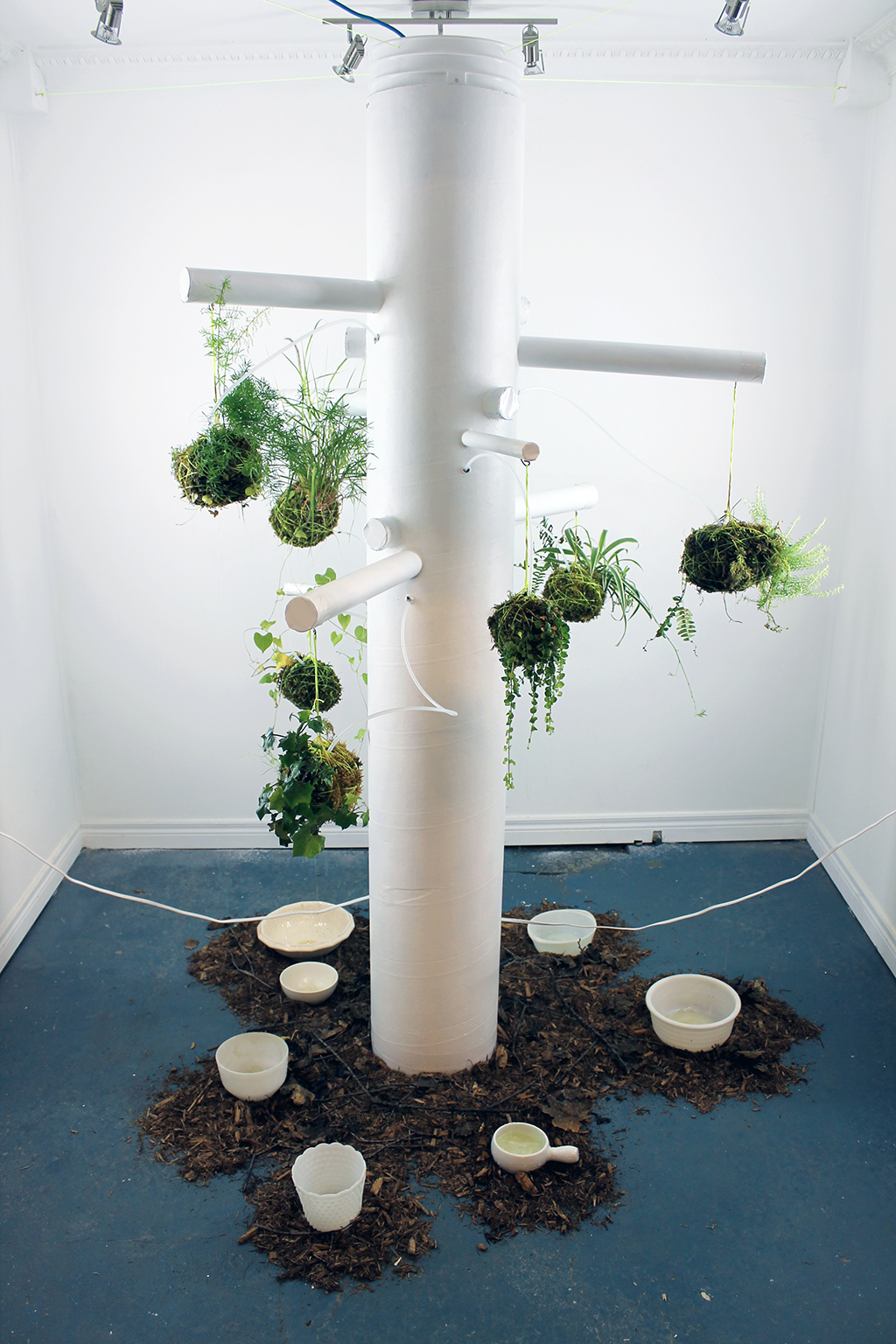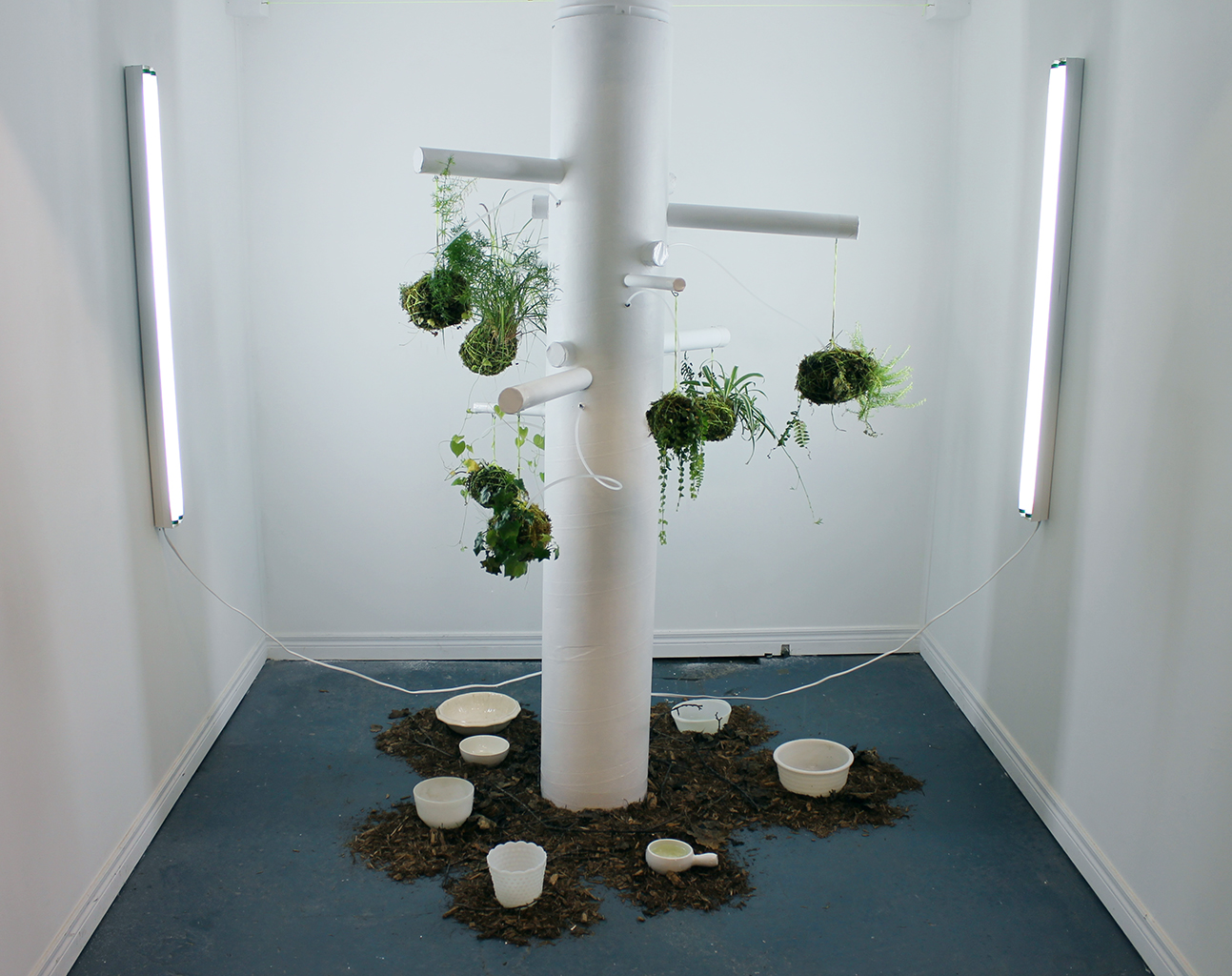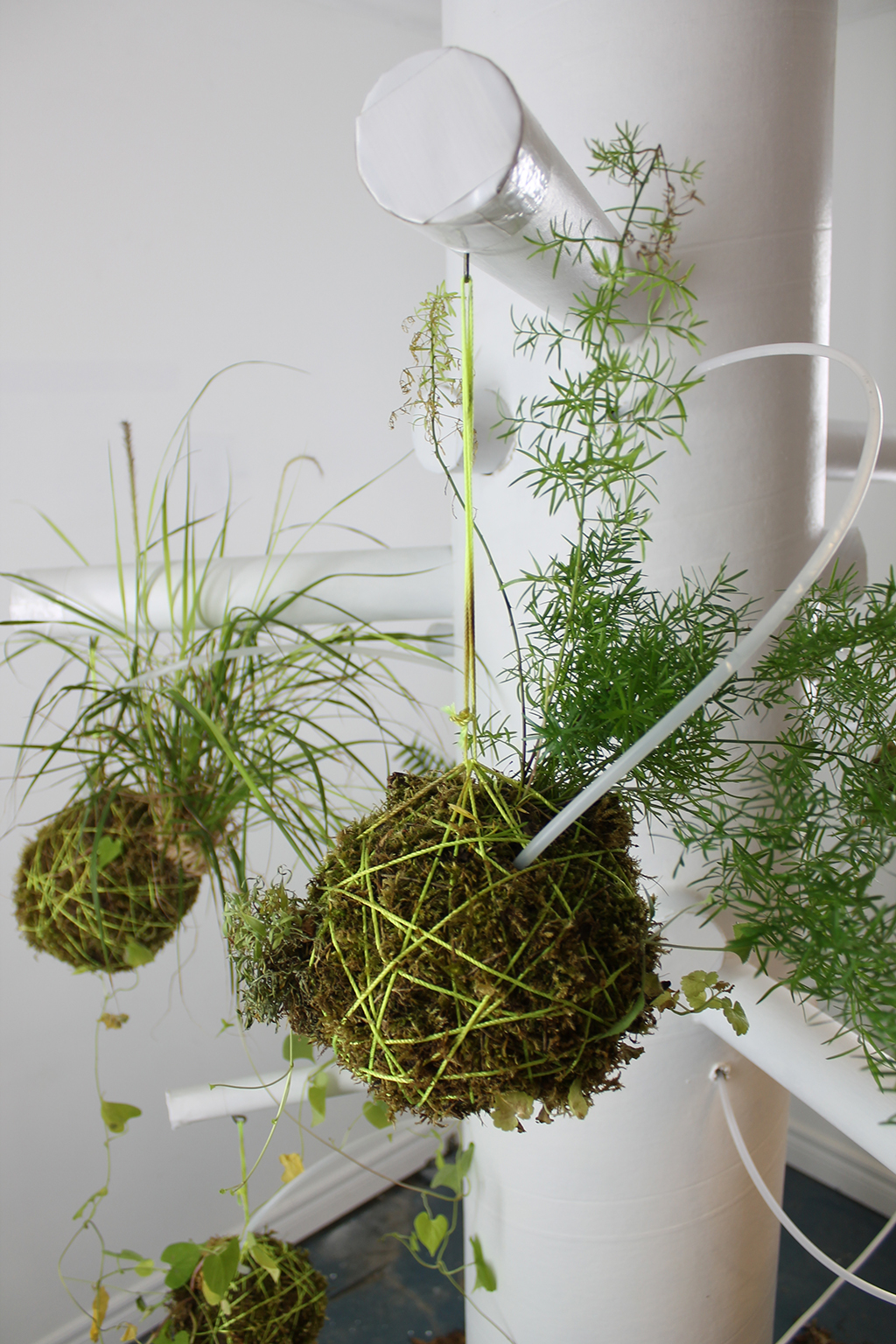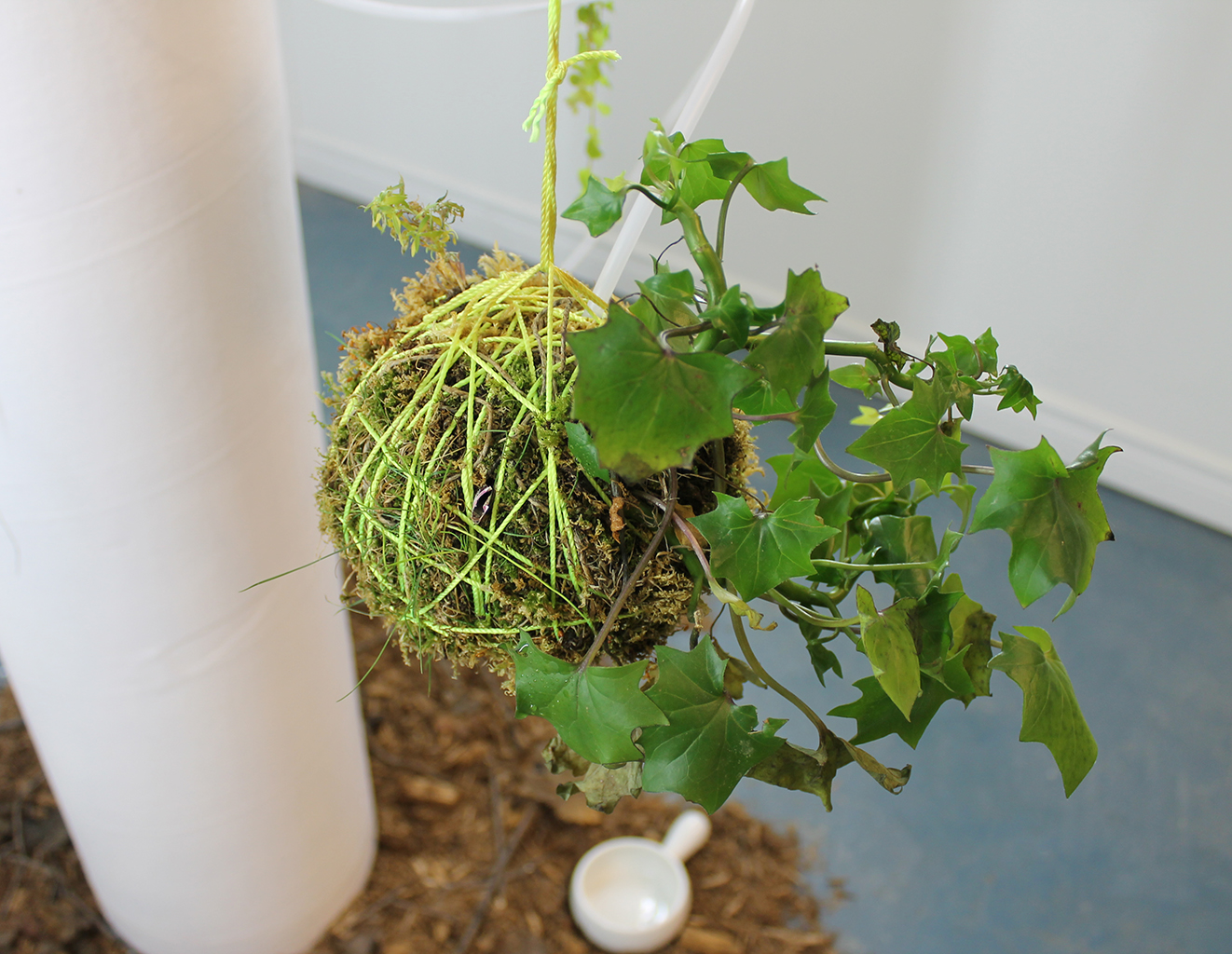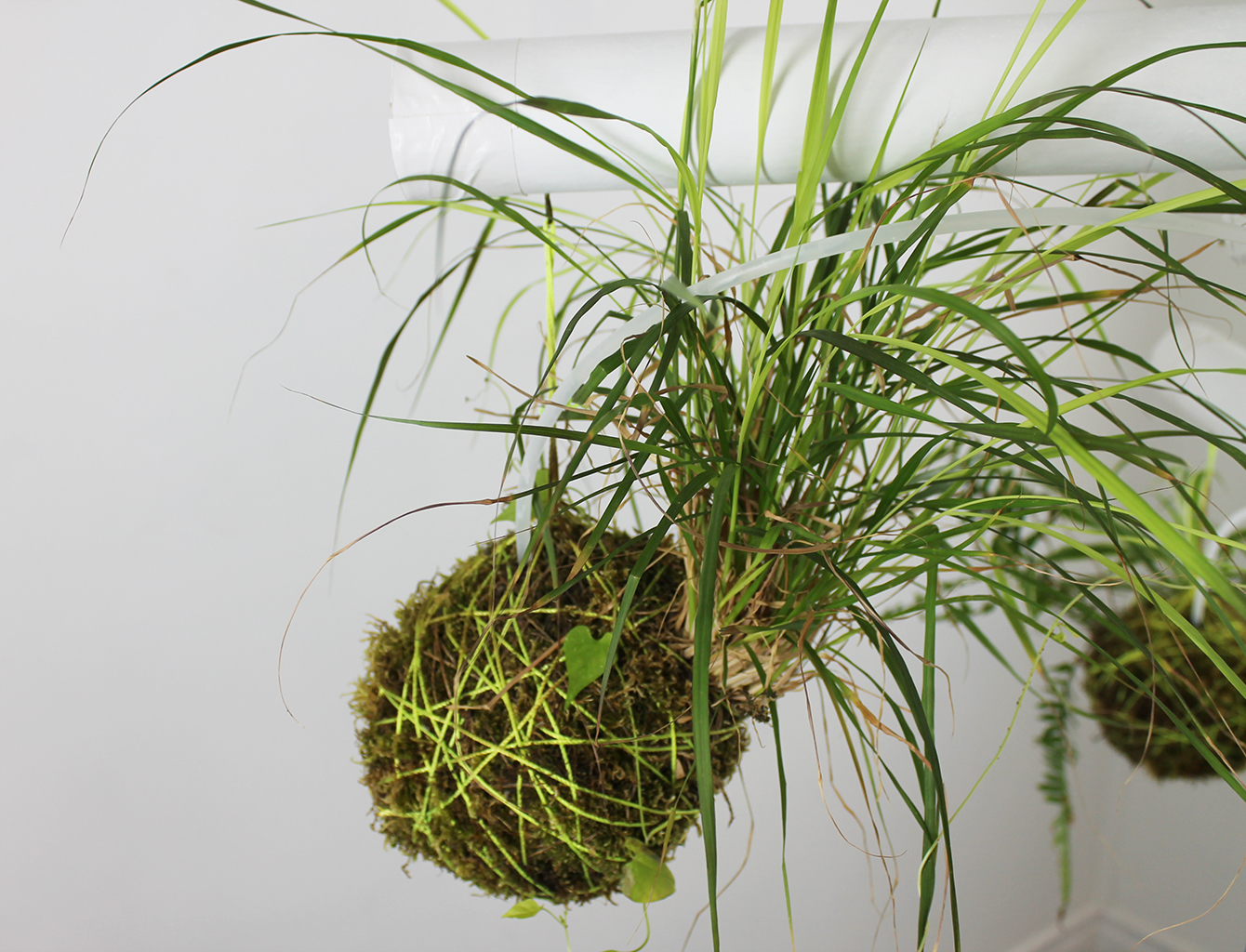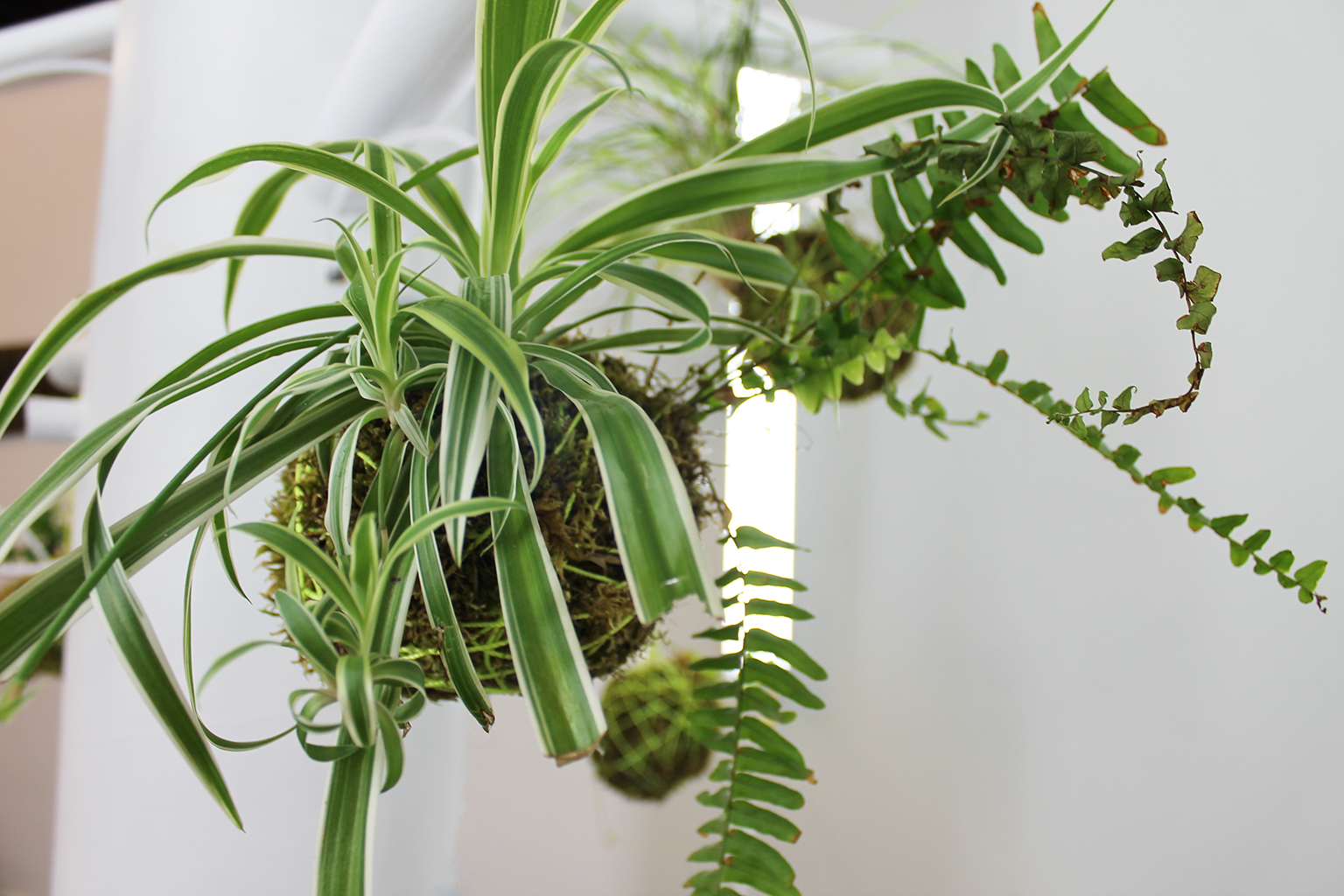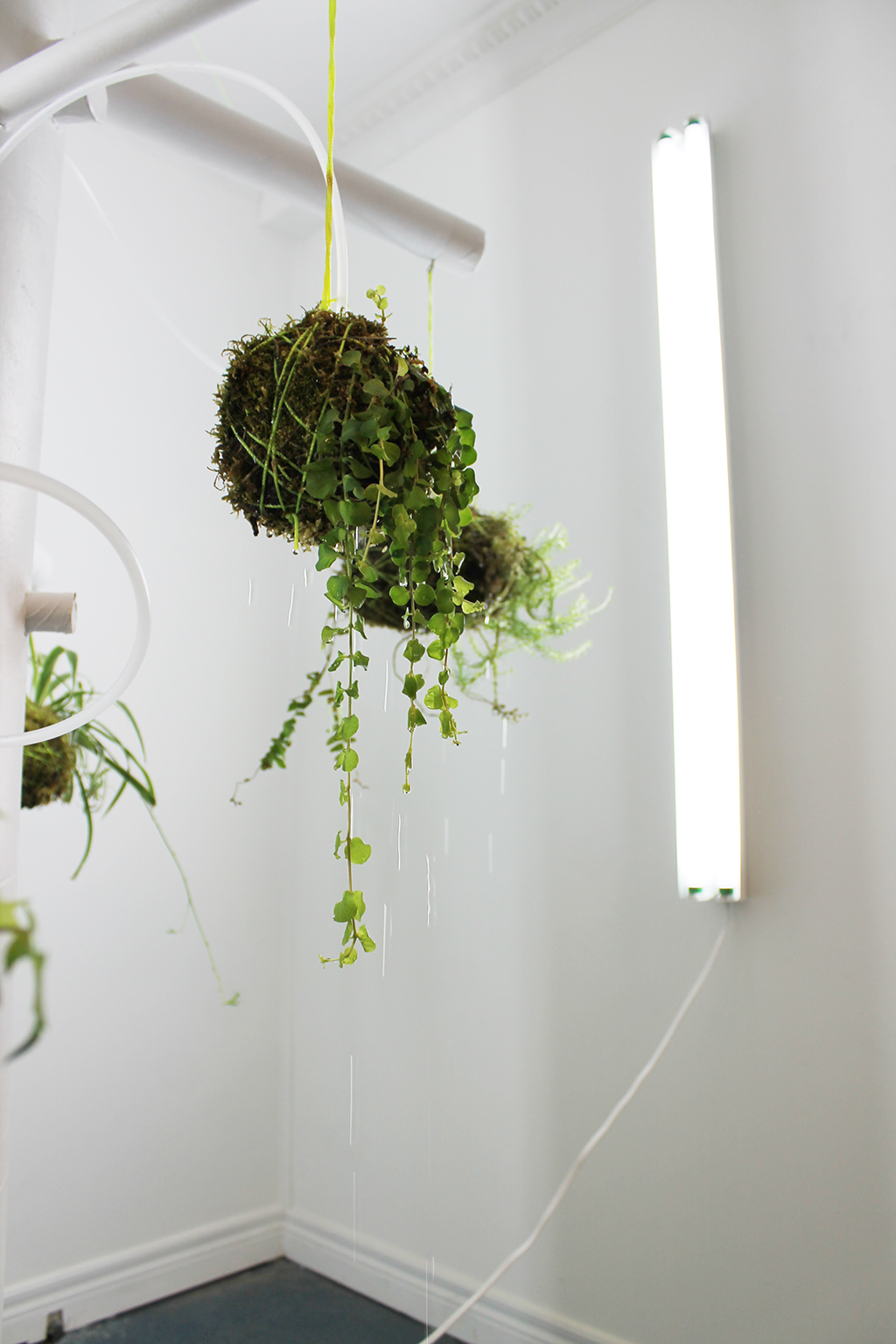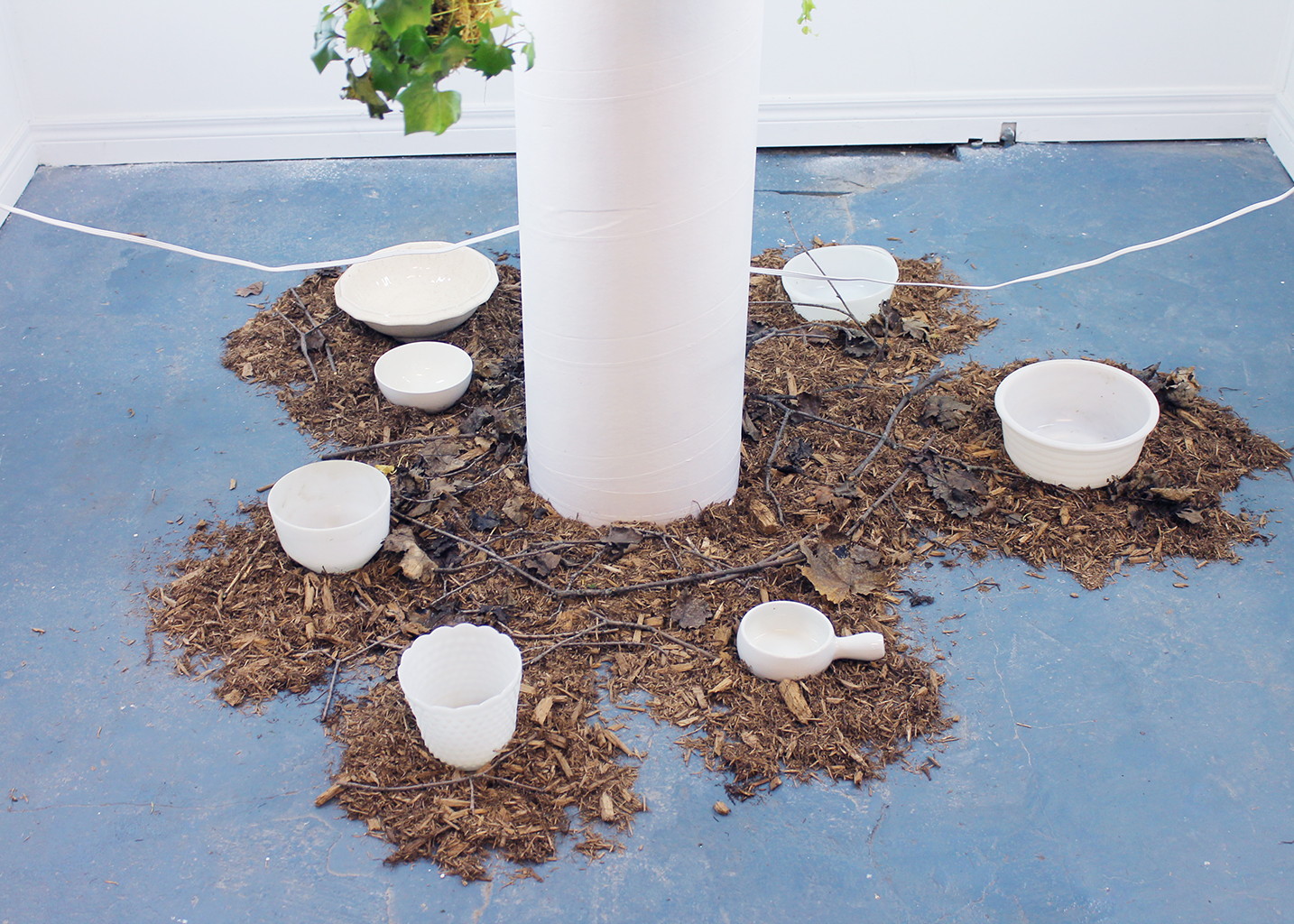Kokedama: A Fragmented Garden
2014
Live plants, moss, soil, cardboard tubing, plant lights, string, flea market bowls, mulch, wood, irrigation tubing and water reservoir,. Approximately 5’ x 5’ x 7’
Kokedama is a form of bonsai which originated in Japan during the 1600s. A bonsai tree would be grown inside a pot until the root ball was tight enough that it could be removed and displayed without the vessel. These suspended plants recall this style and are unique microcosms of larger ecosystems, taking fragmented elements and uniting them into delicate living orbs. Common plants such as ferns, moss and vines have been chosen to encourage a tactile and sensory experience with components of a greater living framework which supports and drives the biosphere. The installation is connected through a central support system reminiscent of a tree’s structure. This main trunk branches out and supports all of the smaller kokedama balls, representing the reactionary efforts of governments to reverse the increasingly severe problem of ecosystem fragmentation. These gardens require the careful observation and maintenance provided by the artist and the support apparatus, or they risk dying off one by one, like so many swiftly dwindling green spaces.
